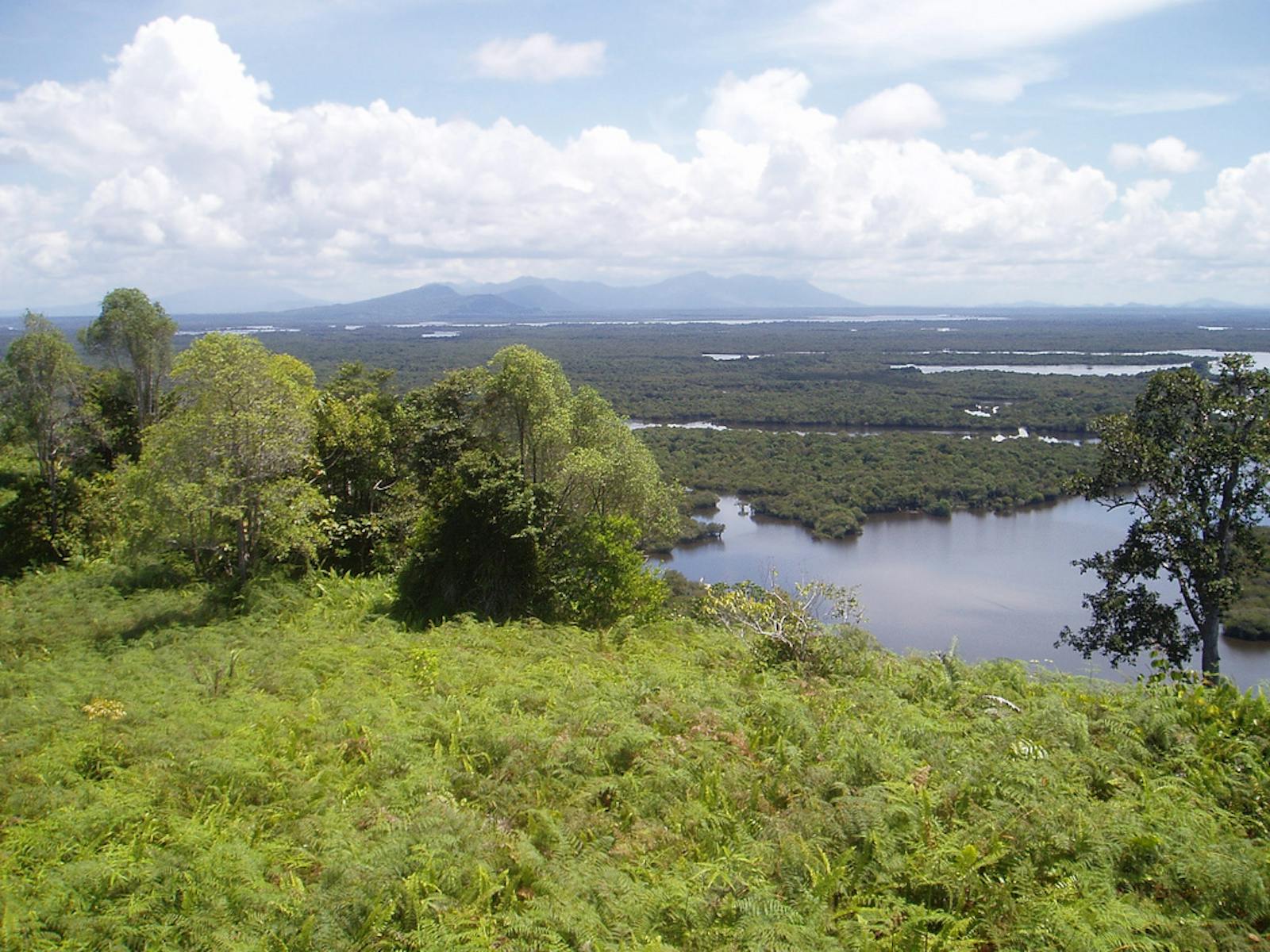Southwest Borneo Freshwater Swamp Forests
The ecoregion’s land area is provided in units of 1,000 hectares. The conservation target is the Global Safety Net (GSN1) area for the given ecoregion. The protection level indicates the percentage of the GSN goal that is currently protected on a scale of 0-10. N/A means data is not available at this time.
Bioregion: Borneo Tropical Forests & Sundaland Heath Forests (IM16)
Realm: Indomalaya
Ecoregion Size (1000 ha):
3,685
Ecoregion ID:
273
Conservation Target:
46%
Protection Level:
3
States: Indonesia
The otter civet is a curious animal. Neither a civet nor an otter, this species nevertheless leads a double life as both, hunting in the water for fish, crabs, and mollusks and climbing trees in search for small birds and mammals. Its webbed feet and flaps that can seal the nostrils and ears help it to dive underwater. Its elongated muzzle with long and stiff vibrissae allows it to feel prey in dark and murky conditions. Despite being first described over 160 years ago, very little information is available about the ecology and natural history of this nocturnal and cryptic animal that lives in the riverine and swamp forests of Borneo.
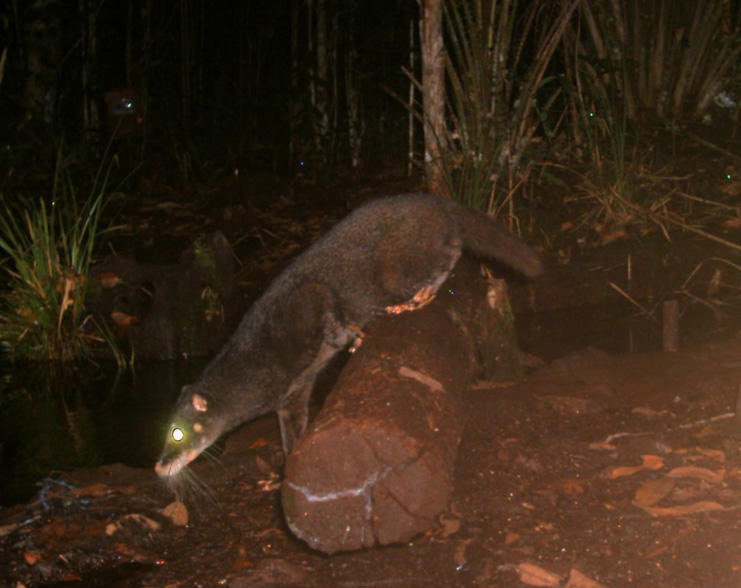
The flagship species of the Southwest Borneo Freshwater Swamp Forests ecoregion is the otter civet. Image credit: Susan Chyne, Sabengau Felid Project
The Southwest Borneo Freshwater Swamp Forests is also a curious ecoregion. It represents the freshwater swamp forests that line the southern and western coast of Borneo in Indonesian Kalimantan. These forests, along the rivers that meander through the flat, low-lying alluvial floodplains, flood periodically and remain waterlogged for part of the year. Unlike the adjacent peat forests, the freshwater swamp forests do not accumulate large quantities of biomass because they are flushed out, and are less acidic.
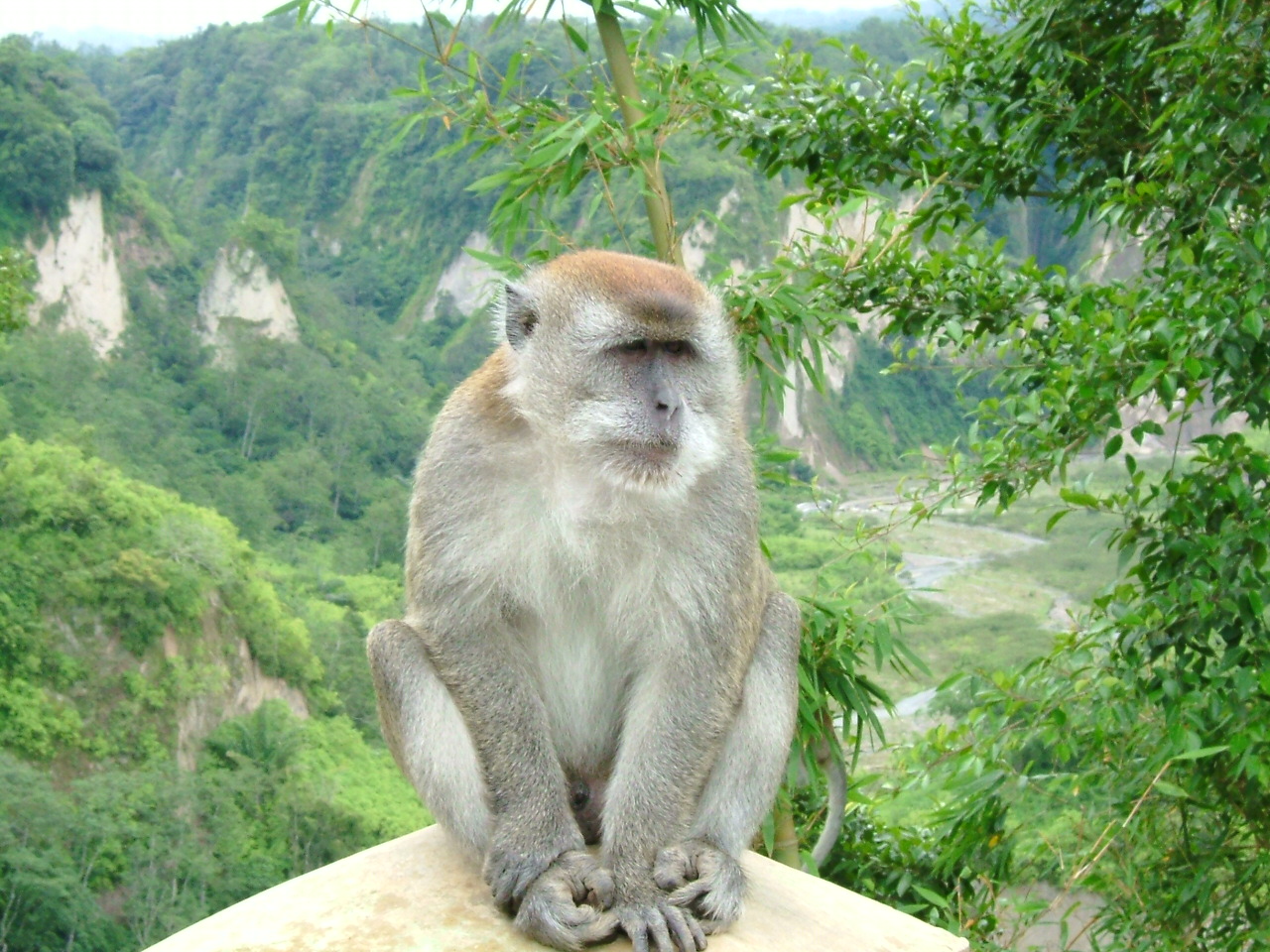
Long-tailed macaque. Image credit: Sakurai Midori, Creative Commons
Because of the more favorable aerobic conditions than the adjacent peat swamp forests, the vegetation is more dense and diverse. The trees are taller, with a canopy growing to over 35 m. Several species are common with the surrounding lowland rainforests, including species of Adina, Alstonia, Campnosperma, Coccoceras, Dillenia, Dyera, Erythrina, Eugenia, Ficus, Memecylon, Metroxylon, Pentaspadon, Shorea, and Vatica.
Tall leguminous plants such as Koompassia, Calophyllum, and Melanorrhoea and the swamp sago, Metroxylon sagu, thrive in this habitat. Lianas and epiphytes adorn the trees, increasing structural habitat complexity for arboreal fauna. In some areas, Mallotus spp. dominate, almost in pure stands. Floating mats of grasses cover the surface where water flows are low.
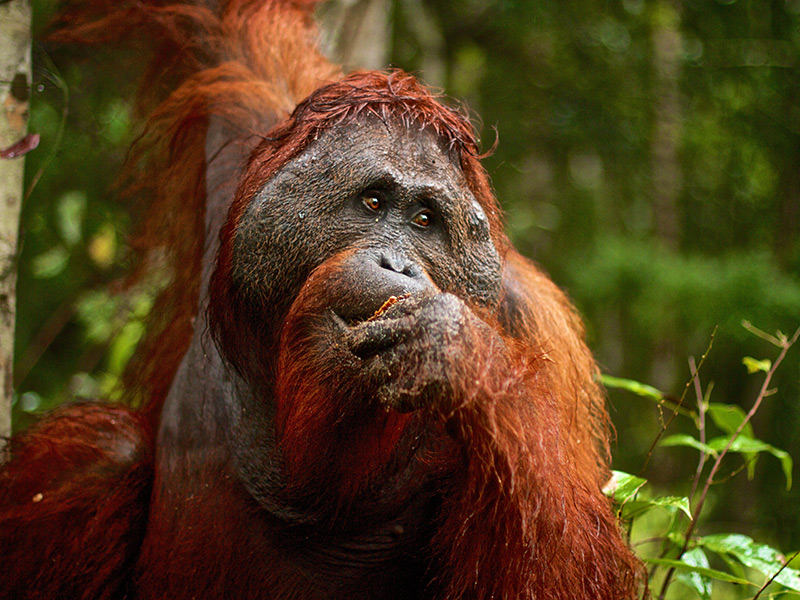
Borneo Indonesia orangutan. Image credit: Creative Commons
The forests support important populations Borneo’s charismatic primates, including the Bornean orangutan and proboscis monkey. The latter are hunted for bezoar stones, which are merely hard concretions formed in the gut of these animals, but are valued in the traditional Chinese medicine trade.
Camera-trap surveys in southern Borneo have recorded good populations of the endemic Sunda clouded leopard, leopard cat, marbled cat, and flat-headed cat. Otters, water monitor lizards, and even the rare Siamese crocodile inhabit the rivers and the forest when it is waterlogged. About 360 species of birds have been recorded from these forests, including several species of hornbills that help to spread the seeds and maintain forest diversity.
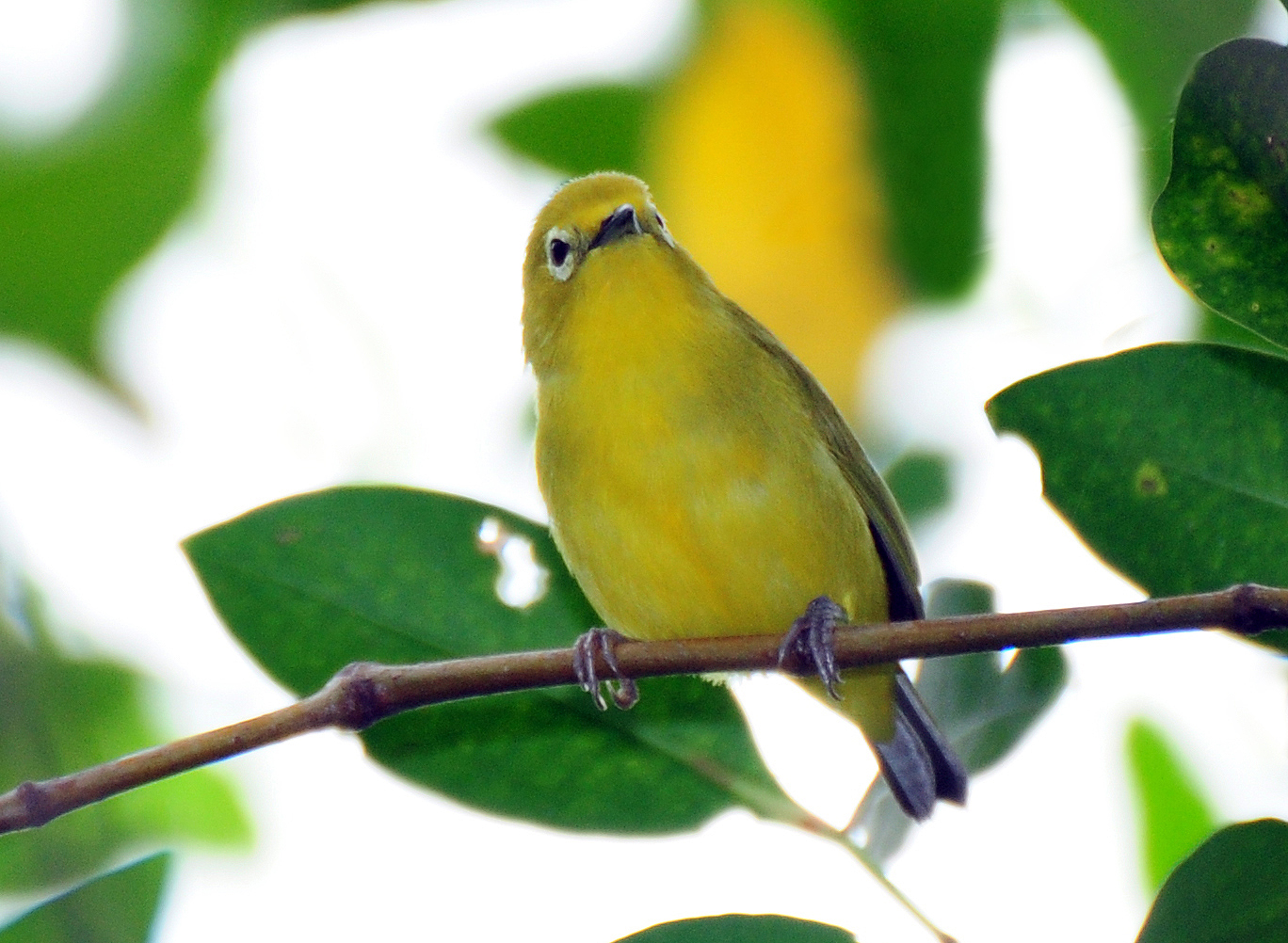
Javan white-eye. Image credit: Creative Commons
Like all other freshwater swamps in the Indo-Pacific region, these have also been extensively drained and converted to rice and other agriculture and plantations. Gold mining is also widespread. Yet, about 60% of the forests are still intact, and offer opportunities to add to the existing protected areas system, that includes the large Tanjung Puting and Sebangau national parks in southern Kalimantan. In south and southeast Kalimantan the forests are being converted to monotypic stands of Melaleuca cajuputi, or paperbark, locally known gelam. This fire-adapted tree has a thick, multi-layered bark that is used to make cajeput oil, used in aromatherapy and for making balms and salves. The wood is used in construction and to make boats.
Thus, the recommended priority conservation actions are to: 1) restore the forests affected by the drainage canals constructed during the failed mega-rice project and timber extraction in the Greater Sebangau area; 2) stop further logging, mining, and draining forests for other land uses; and 3) include the critical role of fresh water provision from these forests as an ecosystem service in assessing any development scheme.
Citations
1. Posa, M.R.C., Wijedasa, L.S. and Corlett, R.T., 2011. Biodiversity and conservation of tropical peat swamp forests. BioScience, 61(1), pp.49-57.
2. Yule, C.M., 2010. Loss of biodiversity and ecosystem functioning in Indo-Malayan peat swamp forests. Biodiversity and Conservation, 19(2), pp.393-409.
3. Phillips, V.D., 1998. Peatswamp ecology and sustainable development in Borneo. Biodiversity & Conservation, 7(5), pp.651-671.
